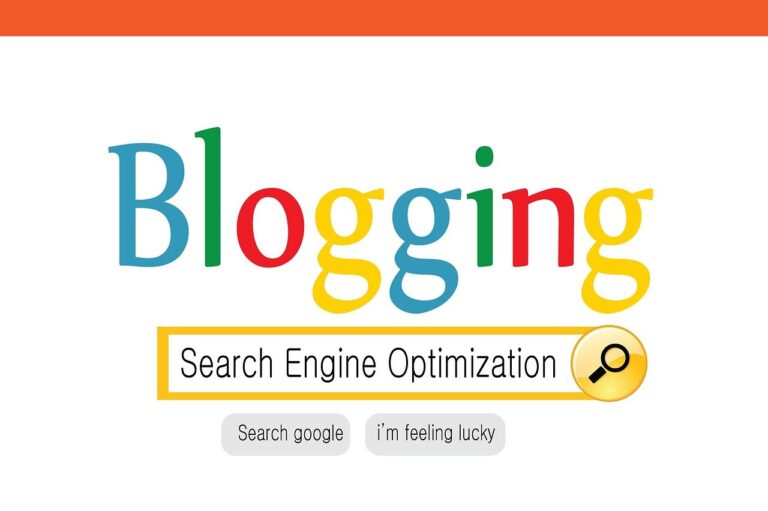Content Marketing Strategy for Healthcare Providers: Boost Your Digital Presence
Healthcare providers face unique challenges in today’s digital landscape. Effective content marketing can help you connect with patients, build trust, and establish your practice as a trusted authority. A well-crafted content marketing strategy for healthcare can attract and engage your target audience, improving patient outcomes and growing your practice.

Creating valuable content tailored to your patients’ needs is key. This might include informative blog posts, educational videos, or interactive tools that address common health concerns. By focusing on topics that matter to your audience, you’ll position yourself as a go-to resource for reliable health information.
Remember, consistency is crucial in content marketing. Regularly publishing high-quality content keeps your audience engaged and helps improve your search engine rankings. With the right approach, you can create a content strategy that resonates with your patients and supports your healthcare practice’s goals.
Key Takeaways
- Develop a content strategy tailored to your patients’ needs and concerns
- Create a mix of content types to engage different audience segments
- Consistently publish valuable content to build trust and improve visibility
Developing a Tailored Content Marketing Approach

Creating a successful content marketing strategy for healthcare providers requires a deep understanding of your audience and careful planning. You’ll need to craft targeted messaging, select the right content types, and optimize for visibility to effectively reach and engage patients and caregivers.
Understanding Healthcare Audiences
To develop an effective content marketing approach, you need to know who you’re talking to. Healthcare audiences are diverse, including patients, caregivers, and healthcare professionals. Each group has unique needs and concerns.
Patients are often searching for reliable health information, treatment options, and support. Caregivers look for practical advice and resources to help them care for loved ones. Healthcare professionals seek the latest research and best practices.
Create detailed personas for each audience segment. Consider factors like age, health conditions, digital literacy, and preferred communication channels. This will help you tailor your content to address their specific pain points and interests.
Remember, healthcare topics can be sensitive. Always aim for a compassionate, trustworthy tone in your content.
Crafting Your Messaging Roadmap
Your messaging roadmap is the blueprint for your content strategy. It outlines key themes, topics, and messages you want to communicate to your audience.
Start by defining your brand voice and values. Are you aiming to be authoritative yet approachable? Empathetic and supportive? Your voice should be consistent across all content types.
Next, identify the main topics you want to cover. These might include preventive care, managing chronic conditions, or explaining complex medical procedures. Break these down into subtopics and specific content ideas.
Consider creating a content marketing program that addresses different stages of the patient journey. From awareness to consideration to decision-making, tailor your messaging to support patients at each step.
Choosing the Right Content Types
Different content types serve different purposes and appeal to various audience segments. Mix and match to create a well-rounded content strategy.
Blog posts and articles are great for in-depth explanations of health topics. They’re also excellent for SEO. Videos can simplify complex medical concepts and showcase your facilities or staff.
Infographics and data visualizations make statistics and processes easy to understand at a glance. They’re highly shareable on social media.
Consider creating ebooks or whitepapers for more comprehensive resources. These can be valuable lead magnets for your email list.
Podcasts are gaining popularity in healthcare. They allow you to dive deep into topics and build a personal connection with your audience.
Don’t forget about interactive content like quizzes or symptom checkers. These can engage users and provide personalized information.
Keyword Research for Targeted Visibility
To ensure your content reaches your target audience, you need to optimize it for search engines. Start with thorough keyword research.
Use tools like Google Keyword Planner or SEMrush to identify relevant keywords and phrases your audience is searching for. Look for a mix of high-volume keywords and long-tail phrases that are more specific to your niche.
Consider local SEO if you’re targeting patients in specific geographic areas. Include location-based keywords in your content.
Don’t forget to research common questions your audience asks. These can be great topics for FAQ pages or blog posts.
Once you’ve identified your keywords, incorporate them naturally into your content, including titles, headers, and meta descriptions.
Creating an Effective Content Calendar
A content calendar helps you plan, organize, and schedule your content creation and distribution. It ensures you’re consistently publishing fresh content and hitting key themes throughout the year.
Start by mapping out important dates like health awareness months or seasonal health concerns. Plan content around these themes in advance.
Aim for a mix of timely and evergreen content. While it’s important to address current health trends, don’t neglect topics that are always relevant to your audience.
Assign topics, deadlines, and responsibilities to team members. This keeps everyone accountable and ensures a steady flow of content.
Be flexible with your calendar. Leave room for unexpected health news or emerging topics that you might need to address quickly.
Remember to plan for content promotion too. Schedule social media posts, email newsletters, and other distribution methods to maximize the reach of your content.
Optimizing and Distributing Healthcare Content

Creating great healthcare content is just the first step. To truly make an impact, you need to optimize it for maximum visibility and distribute it effectively across various channels.
Leveraging SEO for Increased Organic Traffic
Optimizing your content for search engines is crucial for healthcare providers. Start with thorough keyword research to understand what your potential patients are searching for. Focus on long-tail keywords that match specific medical questions or concerns.
Make sure your content is well-structured with clear headings, meta descriptions, and alt text for images. This helps search engines understand and rank your content better.
Don’t forget about local SEO. Many patients look for healthcare providers in their area, so optimize for location-based keywords and keep your Google My Business listing up-to-date.
Regularly update your content to keep it fresh and relevant. This signals to search engines that your site is active and authoritative.
Building Trust and Credibility with Accurate Content
In healthcare, trust is everything. Your content must be accurate, up-to-date, and backed by reliable sources. Always cite reputable medical journals or studies when making claims.
Consider creating patient success stories and testimonials to showcase real-world results. These personal accounts can be powerful tools for building trust.
Develop comprehensive guides and e-books on specific health topics. This demonstrates your expertise and provides value to your audience.
Be transparent about your qualifications and experience. Include bios of your medical staff to humanize your practice and build credibility.
Engaging with Audiences via Social Media and Forums
Social media platforms offer unique opportunities to connect with patients and share your content. Choose platforms where your target audience is most active.
Share bite-sized health tips, infographics, and short video clips to keep your audience engaged. Respond promptly to comments and messages to foster a sense of community.
Participate in relevant online forums and discussion groups. Offer helpful advice (without giving specific medical recommendations) to establish yourself as a trusted resource.
Consider hosting live Q&A sessions or webinars on popular health topics. This interactive approach can boost engagement and attract new patients.
Measuring Impact and Patient Engagement
Track key metrics to gauge the success of your content marketing efforts. Look at website traffic, time on page, and bounce rates to assess content quality.
Monitor social media engagement metrics like likes, shares, and comments. These can indicate how well your content resonates with your audience.
Use tools like Google Analytics to track conversions, such as appointment bookings or newsletter sign-ups. This helps you understand which content drives real results.
Regularly survey your patients to get direct feedback on your content. Ask what topics they’d like to see covered or what formats they prefer.
Adjust your strategy based on these insights. Maybe you’ll find that video content outperforms written articles, or certain topics generate more engagement than others.
Frequently Asked Questions

Content marketing in healthcare requires tailoring strategies to specific audiences, implementing crucial elements, measuring success, engaging creatively, leveraging content for branding, and focusing on key aspects during development.
How do you tailor content strategy to cater to the unique needs of healthcare audiences?
You can tailor your healthcare content strategy by researching your target audience’s demographics, health concerns, and preferred communication channels. Create patient personas to guide your content creation. Ensure your content addresses specific health issues and provides valuable information that resonates with your audience’s needs.
Use language that’s easy to understand, avoiding medical jargon when possible. Consider different formats like videos, infographics, and podcasts to cater to various learning styles.
What elements are crucial in a content marketing plan for healthcare providers?
A successful healthcare content marketing plan includes several key elements. Start with a clear goal, whether it’s increasing patient engagement, boosting brand awareness, or educating the public on specific health topics.
Develop a content calendar to ensure consistent publishing. Include a mix of blog posts, articles, and social media content to cover various topics and reach different audience segments. Incorporate SEO best practices to improve your content’s visibility in search results.
What methods work best for measuring the success of healthcare content marketing?
To measure the success of your healthcare content marketing, track website traffic, engagement rates, and lead generation. Use tools like Google Analytics to monitor page views, time spent on page, and bounce rates.
Monitor social media metrics such as likes, shares, and comments to gauge audience engagement. Track conversion rates for specific calls-to-action, like appointment bookings or newsletter sign-ups.
Can you suggest creative ways for healthcare providers to engage with their target audiences through content?
Get creative with your content by hosting live Q&A sessions on social media platforms. Create interactive quizzes or assessments related to common health concerns. Develop a series of short, informative videos explaining complex medical procedures or treatments in simple terms.
Consider partnering with influencers or patient advocates to share personal stories and experiences. Organize virtual health workshops or webinars on trending health topics to educate and engage your audience.
How can healthcare organizations effectively leverage medical content creation for branding?
You can leverage medical content creation for branding by consistently producing high-quality, authoritative content that showcases your expertise. Develop a unique voice and style that reflects your brand’s values and personality.
Share patient success stories and testimonials to build trust and credibility. Create thought leadership content, such as whitepapers or research reports, to position your organization as an industry leader.
What should healthcare businesses focus on when developing content for their marketing efforts?
When developing content for healthcare marketing, businesses should focus on providing value to their audience. They should address common health concerns, offer practical tips for maintaining wellness, and explain complex medical topics in simple terms.
Businesses should also ensure that their content is accurate, up-to-date, and complies with healthcare regulations like HIPAA. They should also incorporate the four Ps of healthcare marketing – Product, Price, Place, and Promotion – into their content strategy to create a comprehensive approach.







